The most venomous snakes
Venomous snakes are species of suborder Serpentes that are capable of producing venom which is used primarily for immobilizing prey and defense mostly via mechanical injection by fangs. Common venomous snakes include Families Elapidae, Viperidae, Atractaspididae and some of Colubridae. The toxicity of them is mainly indicated by murine LD50, while multifarious factors are considered to judge their potential danger to humans.
Supplement: A list of the Top 100 most venomous snakes in the world
There are four most popular methods in which the median lethal dose (LD50) test is measured:
- LDSC – Subcutaneous: Venom is injected into the fatty layer beneath the skin
- LDIV – Intravenous: Venom is injected directly into a vein
- LDIM – Intramuscular: Venom is injected into a muscle
- LDIP – Intraperitoneal: Venom is injected into the abdominal cavity
The most commonly tested methods are subcutaneous and intravenous injections of mice.
How many people can kill the snake’s venom?
Below is the estimated list of mice and human fatality count based on the maximum venom dose of snakes.
Saw-scaled viper (Echis carinatus)
23,841 Mice / 6 Humans
The saw-scaled viper (Echis carinatus) is a venomous snake species that is native to a wide range of regions in Africa, the Middle East, and parts of South and Southeast Asia. It is a small to medium-sized snake, typically reaching lengths of about 1-2 feet (30-60 cm), although some individuals can grow up to 3 feet (90 cm) in length. The saw-scaled viper gets its common name from the distinctive scales on the underside of its body, which it rubs together to produce a hissing sound when threatened.
The saw-scaled viper is a nocturnal snake that is often found in dry, rocky areas, such as deserts and scrublands. It is a highly venomous snake and is known for being aggressive when provoked or threatened. The venom of the saw-scaled viper is hemotoxic, meaning it attacks the blood and can cause severe bleeding and tissue damage. The saw-scaled viper is responsible for a significant number of snakebite incidents and deaths in its native range, and it is considered to be one of the most dangerous snake species in the world.
The saw-scaled viper has a triangular head, a thin neck, and a slender, cylindrical body. Its coloration is variable, but it is typically brown or reddish-brown in color, with dark crossbands or diamond-shaped markings on its body. The scales on the underside of its body are lighter in color and are sharply keeled, giving them a saw-like appearance. The saw-scaled viper is a viviparous species, meaning it gives birth to live young rather than laying eggs.
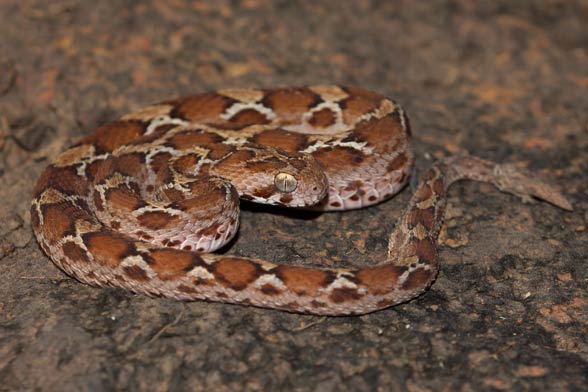
Gaboon viper (Bitis gabonica)
24 000 Mice / 6 Humans
The Gaboon viper (Bitis gabonica) is a venomous snake species that is native to the rainforests of Central and West Africa. It is the largest member of the viper family, with some individuals reaching lengths of up to 7 feet (2.1 meters). The Gaboon viper is characterized by its large size, distinctive coloration, and large, triangular head.
The Gaboon viper has a heavy, muscular body with smooth, shiny scales that are typically green, brown, or black in color. Its head is large and triangular, with a distinctive pair of horn-like scales on its snout. The Gaboon viper has a pair of long, hinged fangs that it uses to inject venom into its prey. Its venom is hemotoxic, meaning it attacks the blood and can cause severe bleeding and tissue damage.
The Gaboon viper is a ambush predator, lying in wait for prey to pass by before striking. It feeds on a wide variety of animals, including small mammals, birds, and reptiles. The Gaboon viper is not aggressive towards humans and typically only bites when threatened or provoked. However, its venom is extremely potent and can be deadly if left untreated. The Gaboon viper is considered one of the most dangerous snake species in Africa.
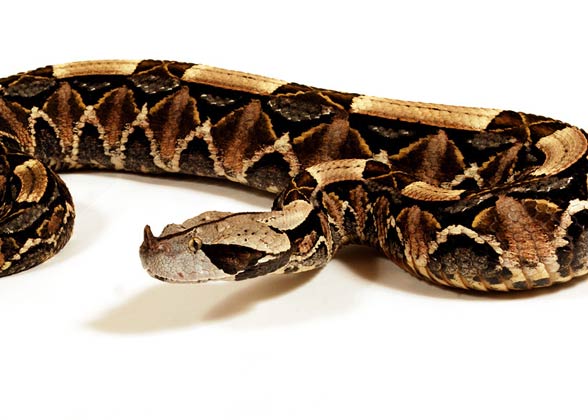
Terciopelo (Bothrops asper)
24,380 Mice / 6 Humans
The Terciopelo (Bothrops asper) is a venomous snake species that is native to Central and South America. It is also known as the fer-de-lance, a name that it shares with several other species of venomous pit vipers in the region. The Terciopelo is a large snake, with adults reaching lengths of up to 8 feet (2.4 meters).
The Terciopelo has a heavy, cylindrical body and a triangular-shaped head with a pair of long, hinged fangs. Its scales are keeled, giving them a rough, textured appearance. The coloration of the Terciopelo is variable, but it is typically brown or olive-colored with darker crossbands or saddles on its body.
The Terciopelo is found in a variety of habitats, including rainforests, deciduous forests, and agricultural areas. It is a nocturnal snake that is active at night and is often found near sources of water. The Terciopelo is an ambush predator, lying in wait for prey to pass by before striking. It feeds on a wide variety of animals, including small mammals, birds, and reptiles.
The Terciopelo is a highly venomous snake and is known for being aggressive when provoked or threatened. Its venom is hemotoxic, meaning it attacks the blood and can cause severe bleeding and tissue damage. The Terciopelo is responsible for a significant number of snakebite incidents and deaths in its native range, and it is considered one of the most dangerous snake species in Central and South America.
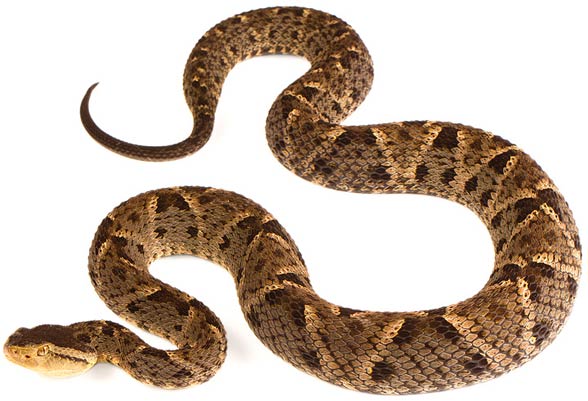
Cape cobra (Naja nivea)
31,250 Mice / 9 Humans
The Cape cobra (Naja nivea) is a venomous snake species that is native to parts of Southern and Eastern Africa. It is a medium-sized snake, typically reaching lengths of about 3-4 feet (90-120 cm), although some individuals can grow up to 6 feet (180 cm) in length. The Cape cobra gets its common name from the fact that it is found in the Cape region of South Africa.
The Cape cobra is a diurnal snake, meaning it is active during the day. It is found in a variety of habitats, including savannas, grasslands, and forests. It is an agile, fast-moving snake that is known for its ability to stand upright and spread its hood when threatened. The Cape cobra is also a good climber and is often found in trees.
The Cape cobra has a slender, cylindrical body and a distinctive hood that it can expand when threatened. Its coloration is variable, but it is typically yellow, brown, or olive-colored with darker crossbands or spots on its body.
The Cape cobra is a venomous snake and is capable of injecting a potent neurotoxic venom through its long, hinged fangs. Its venom attacks the nervous system and can cause symptoms such as paralysis, difficulty breathing, and death. The Cape cobra is responsible for a significant number of snakebite incidents and deaths in its native range, and it is considered one of the most dangerous snake species in Africa.
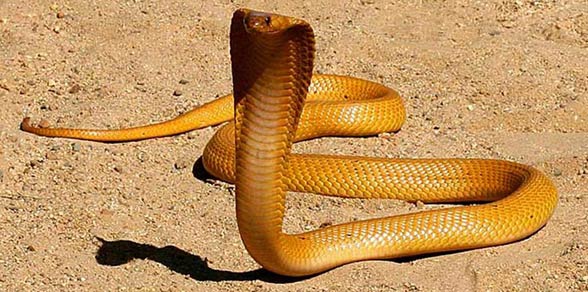
Indian cobra (Naja naja)
33,689 Mice / 10 Humans
The Indian cobra (Naja naja) is a venomous snake species that is native to the Indian subcontinent and parts of Southeast Asia. It is a medium-sized snake, typically reaching lengths of about 3-4 feet (90-120 cm), although some individuals can grow up to 6 feet (180 cm) in length. The Indian cobra is also known as the Asian cobra or the spectacled cobra due to the distinctive circular or oval-shaped markings on the back of its hood.
The Indian cobra is a diurnal snake, meaning it is active during the day. It is found in a variety of habitats, including forests, grasslands, and agricultural areas. It is an agile, fast-moving snake that is known for its ability to stand upright and spread its hood when threatened. The Indian cobra is also a good climber and is often found in trees.
The Indian cobra has a slender, cylindrical body and a distinctive hood that it can expand when threatened. Its coloration is variable, but it is typically yellow, brown, or olive-colored with darker crossbands or spots on its body.
The Indian cobra is a venomous snake and is capable of injecting a potent neurotoxic venom through its long, hinged fangs. Its venom attacks the nervous system and can cause symptoms such as paralysis, difficulty breathing, and death. The Indian cobra is responsible for a significant number of snakebite incidents and deaths in its native range, and it is considered one of the most dangerous snake species in Asia.
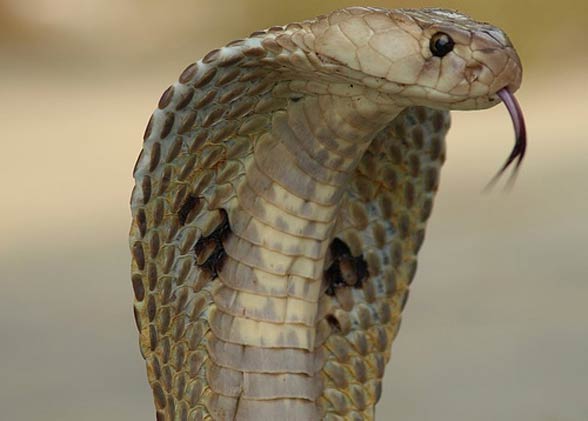
King cobra (Ophiophagus hannah)
45,830 Mice / 11 Humans
The king cobra (Ophiophagus hannah) is a venomous snake species that is native to the rainforests of South and Southeast Asia. It is the longest venomous snake in the world, with some individuals reaching lengths of up to 18 feet (5.5 meters). The king cobra is also known as the hamadryad, a name that refers to the mythical Greek forest nymphs that were said to live in trees.
The king cobra has a slender, cylindrical body with a triangular-shaped head and a pair of long, hinged fangs. Its scales are smooth and shiny, and its coloration is typically olive-green or brown, with lighter crossbands or spots on its body. The king cobra is a diurnal snake, meaning it is active during the day. It is found in a variety of habitats, including rainforests, deciduous forests, and agricultural areas.
The king cobra is a highly venomous snake and is known for its potent neurotoxic venom, which it injects through its long, hinged fangs. Its venom attacks the nervous system and can cause symptoms such as paralysis, difficulty breathing, and death.
The king cobra is an aggressive snake and is known to be territorial, attacking intruders that enter its territory. It is considered to be one of the most dangerous snake species in the world. Despite its reputation, the king cobra is not typically aggressive towards humans and only bites when it feels threatened or provoked.
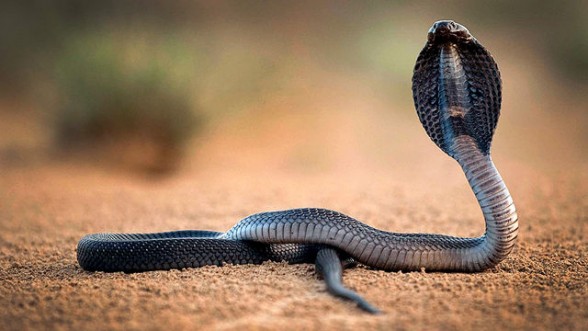
Russell’s viper (Daboia russelii)
88,211 Mice / 22 Humans
Russell’s viper (Daboia russelii) is a venomous snake species that is native to parts of South and Southeast Asia. It is a medium to large-sized snake, typically reaching lengths of about 3-5 feet (90-150 cm), although some individuals can grow up to 6.5 feet (200 cm) in length. Russell’s viper is also known as the chain viper or the Indian Russell’s viper due to the distinctive chain-like markings on its body.
Russell’s viper has a stout, cylindrical body with a triangular-shaped head and a pair of long, hinged fangs. Its scales are keeled, giving them a rough, textured appearance. The coloration of Russell’s viper is variable, but it is typically brown or reddish-brown in color with darker crossbands or spots on its body.
Russell’s viper is found in a variety of habitats, including grasslands, forests, and agricultural areas. It is a nocturnal snake that is active at night and is often found near sources of water. Russell’s viper is an ambush predator, lying in wait for prey to pass by before striking. It feeds on a wide variety of animals, including small mammals, birds, and reptiles.
Russell’s viper is a highly venomous snake and is known for being aggressive when provoked or threatened. Its venom is hemotoxic, meaning it attacks the blood and can cause severe bleeding and tissue damage. Russell’s viper is responsible for a significant number of snakebite incidents and deaths in its native range, and it is considered to be one of the most dangerous snake species in Asia.
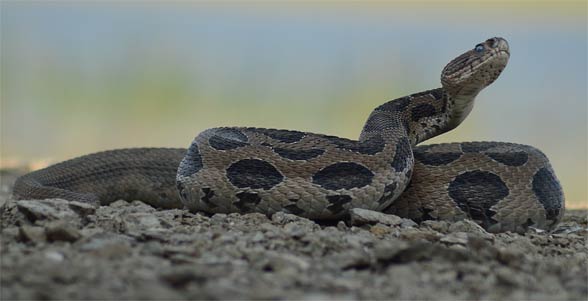
Black mamba (Dendroaspis polylepis)
33 Humans
The black mamba (Dendroaspis polylepis) is a venomous snake species that is native to the savannas and woodlands of Sub-Saharan Africa. It is a large, fast-moving snake that is known for its aggressive behavior and highly toxic venom. The black mamba is the longest venomous snake in Africa, with some individuals reaching lengths of up to 14 feet (4.3 meters).
The black mamba has a slender, cylindrical body with a triangular-shaped head and a pair of long, hinged fangs. Its scales are smooth and shiny, and its coloration is typically olive-green, brown, or gray in color, with a distinctive black coloration on the inside of its mouth. The black mamba is a diurnal snake, meaning it is active during the day.
The black mamba is an aggressive snake and is known to attack humans when provoked or threatened. Its venom is a potent neurotoxin that attacks the nervous system and can cause symptoms such as paralysis, difficulty breathing, and death. The black mamba is considered to be one of the most dangerous snake species in Africa, and it is responsible for a significant number of snakebite incidents and deaths in its native range.
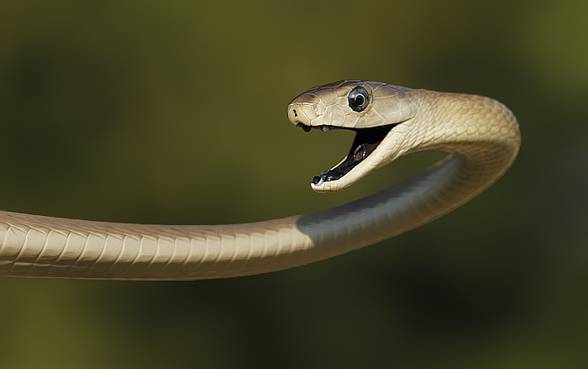
Caspian cobra (Naja oxiana)
62,165 Mice / 42 Humans
The Caspian cobra (Naja oxiana) is a venomous snake species that is native to parts of Central and Southwest Asia, including the Caspian Sea region. It is a medium-sized snake, typically reaching lengths of about 3-4 feet (90-120 cm), although some individuals can grow up to 6 feet (180 cm) in length. The Caspian cobra is also known as the Central Asian cobra or the Transcaspian cobra.
The Caspian cobra has a slender, cylindrical body with a triangular-shaped head and a pair of long, hinged fangs. Its scales are smooth and shiny, and its coloration is typically yellow, brown, or olive-colored with darker crossbands or spots on its body. The Caspian cobra is a diurnal snake, meaning it is active during the day. It is found in a variety of habitats, including forests, grasslands, and agricultural areas.
The Caspian cobra is a venomous snake and is capable of injecting a potent neurotoxic venom through its long, hinged fangs. Its venom attacks the nervous system and can cause symptoms such as paralysis, difficulty breathing, and death.
The Caspian cobra is responsible for a significant number of snakebite incidents and deaths in its native range, and it is considered to be one of the most dangerous snake species in Asia. Despite its reputation, the Caspian cobra is not typically aggressive towards humans and only bites when it feels threatened or provoked.
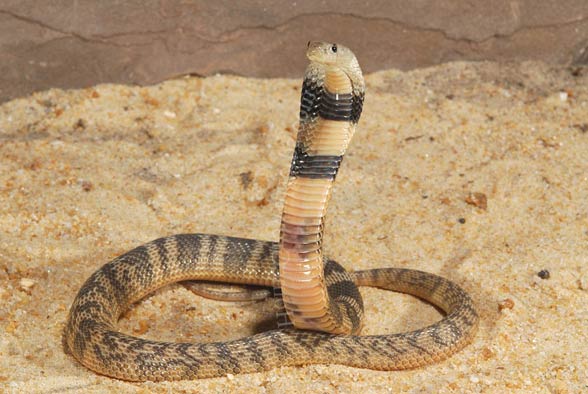
Coastal taipan (Oxyuranus scutellatus)
208,019 Mice / 56 Humans
The coastal taipan (Oxyuranus scutellatus), also known as the “fierce snake” or “small-scaled snake,” is a venomous snake species that is native to parts of Australia and Papua New Guinea. It is a medium to large-sized snake, typically reaching lengths of about 6-9 feet (1.8-2.7 meters), although some individuals can grow up to 11 feet (3.4 meters) in length. The coastal taipan is known for its highly toxic venom and its aggressive behavior when threatened.
The coastal taipan has a slender, cylindrical body with a triangular-shaped head and a pair of long, hinged fangs. Its scales are smooth and shiny, and its coloration is typically olive-green or brown in color, with darker crossbands or spots on its body. The coastal taipan is a diurnal snake, meaning it is active during the day. It is found in a variety of habitats, including forests, grasslands, and agricultural areas.
The coastal taipan is a highly venomous snake and is known for its potent neurotoxic venom, which it injects through its long, hinged fangs. Its venom attacks the nervous system and can cause symptoms such as paralysis, difficulty breathing, and death.
The coastal taipan is considered to be one of the most dangerous snake species in the world and is responsible for a significant number of snakebite incidents and deaths in its native range. Despite its reputation, the coastal taipan is not typically aggressive towards humans and only bites when it feels threatened or provoked.
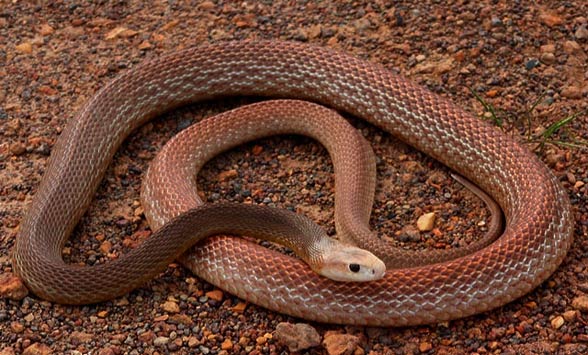
Eastern brown snake (Pseudonaja textilis)
212,329 Mice / 58 Humans
The Eastern brown snake (Pseudonaja textilis) is a venomous snake species that is native to parts of Australia and New Guinea. It is a medium-sized snake, typically reaching lengths of about 3-5 feet (90-150 cm), although some individuals can grow up to 6.5 feet (200 cm) in length. The Eastern brown snake is also known as the common brown snake or the brown snake.
The Eastern brown snake has a slender, cylindrical body with a triangular-shaped head and a pair of long, hinged fangs. Its scales are smooth and shiny, and its coloration is typically brown or reddish-brown in color, with lighter crossbands or spots on its body. The Eastern brown snake is a diurnal snake, meaning it is active during the day. It is found in a variety of habitats, including forests, grasslands, and agricultural areas.
The Eastern brown snake is a highly venomous snake and is known for its potent neurotoxic venom, which it injects through its long, hinged fangs. Its venom attacks the nervous system and can cause symptoms such as paralysis, difficulty breathing, and death.
The Eastern brown snake is responsible for a significant number of snakebite incidents and deaths in its native range, and it is considered to be one of the most dangerous snake species in the world. Despite its reputation, the Eastern brown snake is not typically aggressive towards humans and only bites when it feels threatened or provoked.
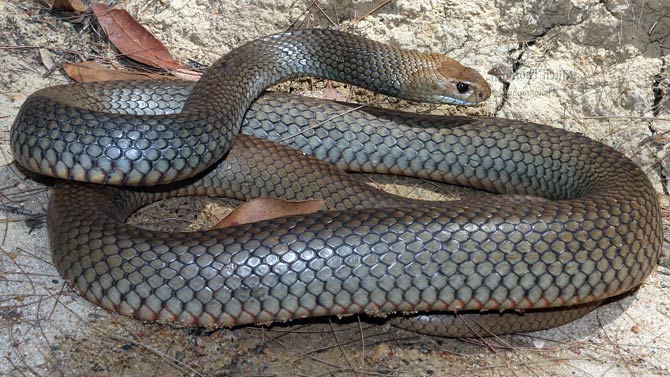
Forest cobra (Naja melanoleuca)
244,889 Mice / 65 Humans
The forest cobra (Naja melanoleuca) is a venomous snake species that is native to parts of Central and West Africa. It is a medium-sized snake, typically reaching lengths of about 3-4 feet (90-120 cm), although some individuals can grow up to 6 feet (180 cm) in length. The forest cobra is also known as the black-necked cobra due to the distinctive black coloration on the back of its neck.
The forest cobra has a slender, cylindrical body with a triangular-shaped head and a pair of long, hinged fangs. Its scales are smooth and shiny, and its coloration is typically yellow, brown, or olive-colored with darker crossbands or spots on its body. The forest cobra is a diurnal snake, meaning it is active during the day. It is found in a variety of habitats, including forests, grasslands, and agricultural areas.
The forest cobra is a venomous snake and is capable of injecting a potent neurotoxic venom through its long, hinged fangs. Its venom attacks the nervous system and can cause symptoms such as paralysis, difficulty breathing, and death.
The forest cobra is responsible for a significant number of snakebite incidents and deaths in its native range, and it is considered to be one of the most dangerous snake species in Africa. Despite its reputation, the forest cobra is not typically aggressive towards humans and only bites when it feels threatened or provoked.
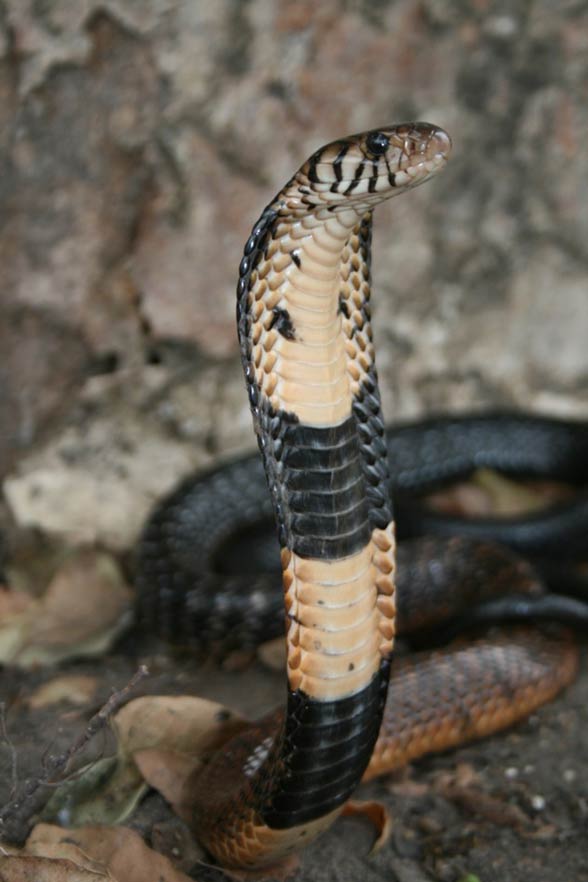
The most venomous snake in the world:
Inland taipan (Oxyuranus microlepidotus)
1,085,000 Mice / 289 Humans
The inland taipan (Oxyuranus microlepidotus), also known as the “fierce snake” or the “Western taipan,” is a venomous snake species that is native to parts of Australia. It is a medium to large-sized snake, typically reaching lengths of about 6-9 feet (1.8-2.7 meters), although some individuals can grow up to 11 feet (3.4 meters) in length. The inland taipan is known for its highly toxic venom and its aggressive behavior when threatened.
The inland taipan has a slender, cylindrical body with a triangular-shaped head and a pair of long, hinged fangs. Its scales are smooth and shiny, and its coloration is typically olive-green or brown in color, with darker crossbands or spots on its body. The inland taipan is a diurnal snake, meaning it is active during the day. It is found in a variety of habitats, including forests, grasslands, and agricultural areas.
The inland taipan is a highly venomous snake and is known for its potent neurotoxic venom, which it injects through its long, hinged fangs. Its venom attacks the nervous system and can cause symptoms such as paralysis, difficulty breathing, and death. The inland taipan is considered to be one of the most dangerous snake species in the world and is responsible for a significant number of snakebite incidents and deaths in its native range. Despite its reputation, the inland taipan is not typically aggressive towards humans and only bites when it feels threatened or provoked.
The inland taipan is native to central and western parts of Australia, where it is found in arid and semi-arid regions. It is a shy, reclusive snake that is rarely seen by humans, and it is considered to be one of the most venomous snakes in the world. The inland taipan feeds on small mammals, birds, and reptiles, and it uses its highly toxic venom to subdue its prey.
The venom of the inland taipan is a potent neurotoxin that attacks the nervous system and can cause symptoms such as paralysis, difficulty breathing, and death. The venom of the inland taipan is considered to be the most toxic of any snake species, and it is capable of killing a human within 45 minutes of a bite. Despite its reputation as a highly venomous snake, the inland taipan is not typically aggressive towards humans and only bites when it feels threatened or provoked.
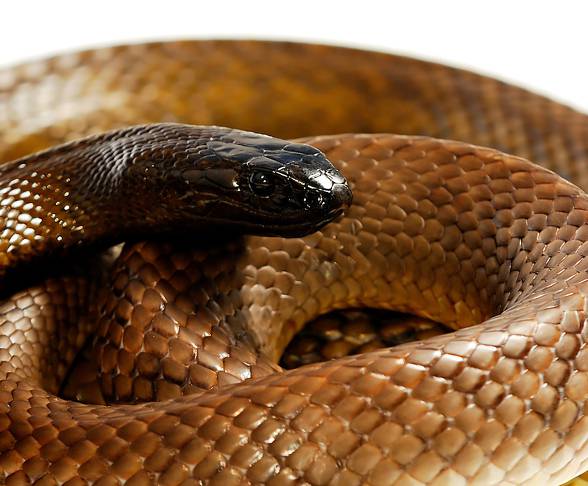

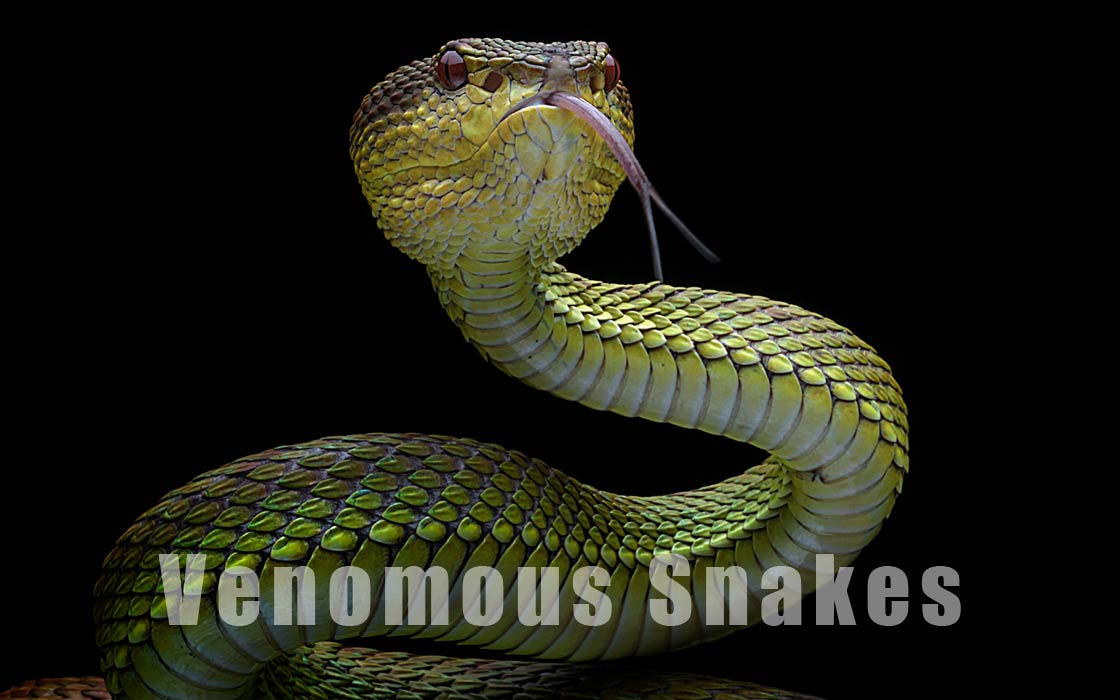
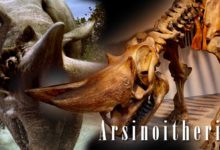

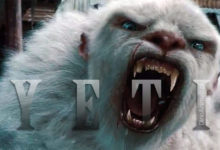
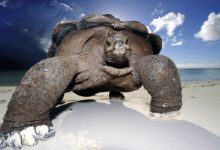


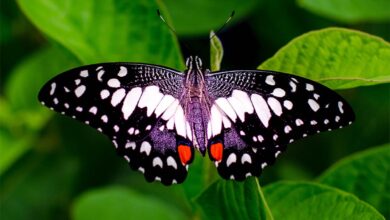
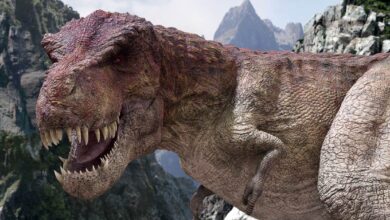



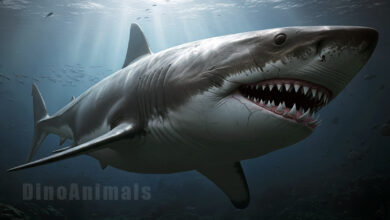
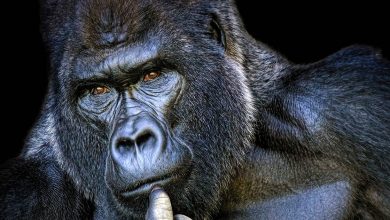
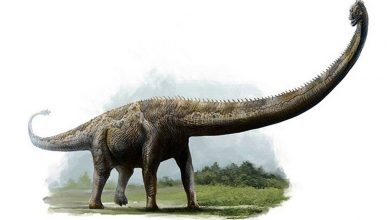
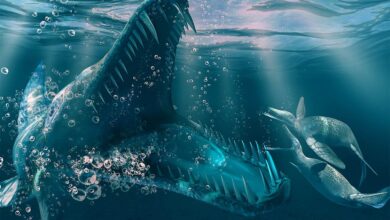
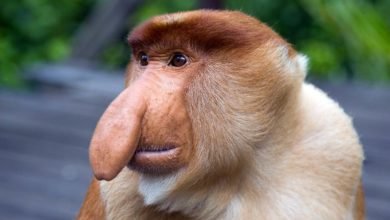
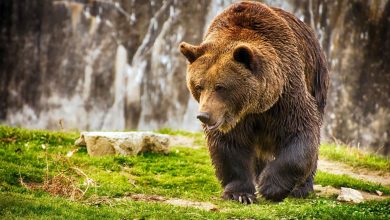
Most venomous and most dangerous are different propositions. Toxicity is a measure how strong a species’ venom is. That is one factor that determines how dangerous a venomous snake is, but volume produced and amount injected is also a crucial factor. A species that is capable of delivering a huge quantity of lower-toxicity venom can be more deadly than a species with higher venom toxicity delivered in lower volume.
Also, snake are venomous, not poisonous.
And where’s Boomslang? Or there weren’t included snakes with hemotoxic venom?
You can find Boomslang here: https://dinoanimals.com/animals/most-venomous-snakes-top-10-top-100/. This list contains over 70 poisonous snakes. Boomslang is in position 62.
Where’s the Krait..??? Tiger..??
Here you can find complete list: https://dinoanimals.com/animals/most-venomous-snakes-top-10-top-100/ with krait and tiger snake.